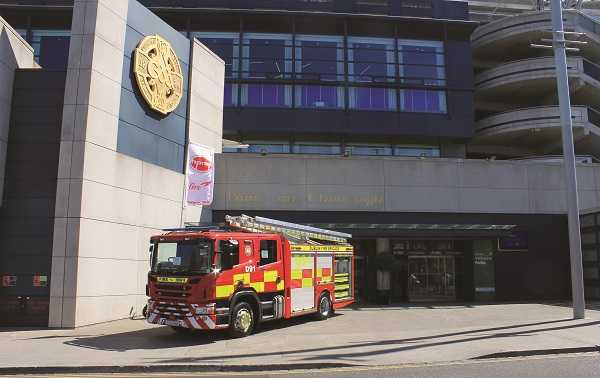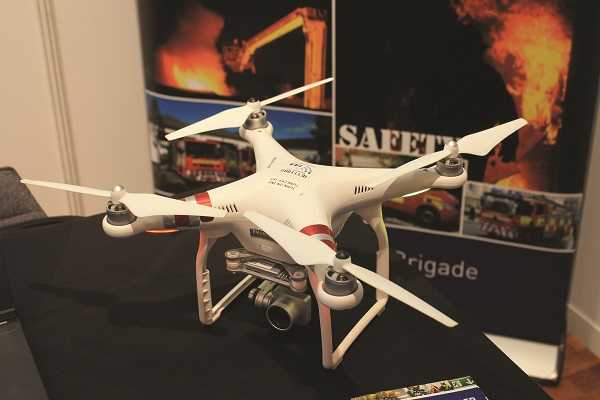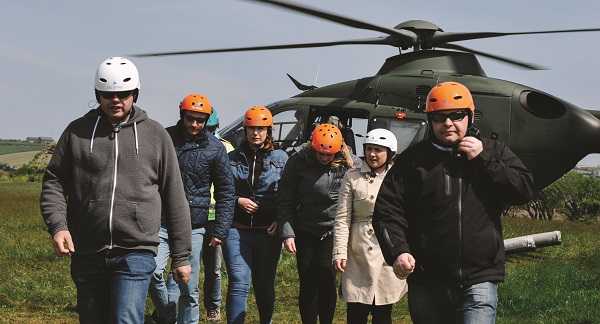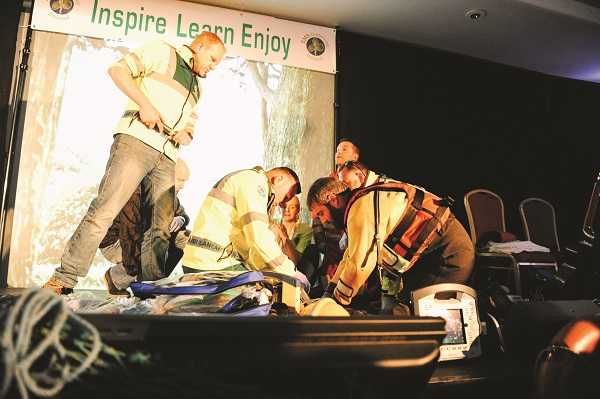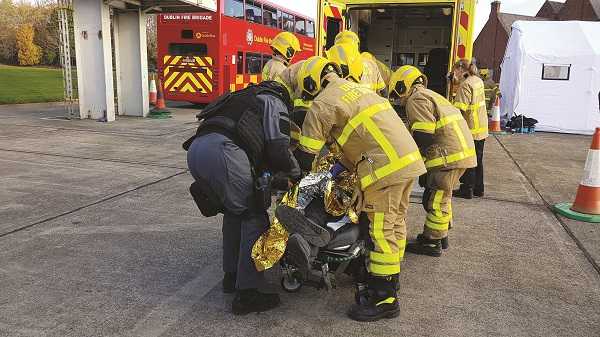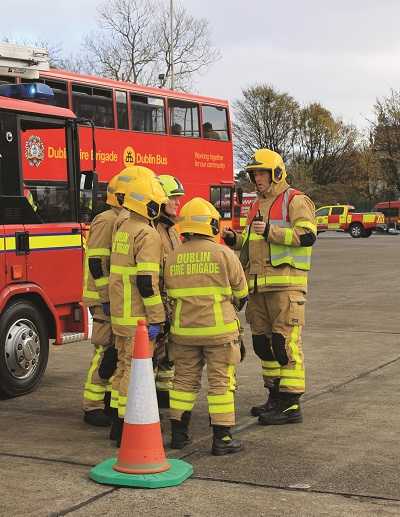Class 1/2017 successfully completed their training programme at the end of May.
The passout parade is organised as a graduation ceremony for the recruits and their families and friends, and provides them with an opportunity to showcase the skills they have learned over the past 16 weeks to their loved ones. With the sun beating down on the OBI’s training yard at the end of May, a total of 50 recruits from Class 1/2017 received their scrolls and completed the passout ceremony, looking forward to the beginning of their new careers – 48 from Dublin Fire Brigade and two from Waterford Fire Service. The average age of Class 1/2017 is 25.5 years – the oldest is 48 while the youngest recruit is just 20. Lord Mayor of Dublin Brendan Carr addressed the recruits at the beginning of the parade, noting his pride and that of the city’s. “This is a highlight of your 17 weeks in training and we know that the city
“This is a highlight of your 17 weeks in training and we know that the city have taken you away from your normal and everyday life,” he said. “I want to thank your partners and families, your mothers and fathers, husbands and wives, for allowing us for the past 17 weeks… to be able to put you through this rigorous training session you went through. The people of Dublin, as you well know, are very proud and we have great respect [for] our emergency services, and with good reason.”
The demonstration of skills including a very impressive foot drill demonstration, consisting of 600 individual movements that were memorised and performed flawlessly. Following a community fire safety demonstration, the recruits then demonstrated their skills in a high rise rescue, hazmat incidents, an RTC with extrication and removal of patients to hospital, a response to a domestic fire incident including the use of breathing apparatus, and finally a highline rescue. At the end of the demonstrations the recruits lined up in front of the gathered crowd to receive their scrolls – the Silver Axe award was presented to recruit firefighter and former Defence Forces member Darren Murphy. “I was looking for a change and I felt that Dublin Fire Brigade could give that change to me. It’s different from the Defence Forces because you’re learning new skills,” he told TheJournal.ie. “I wouldn’t have done anything with the BA through the Defence Forces, or road traffic collisions, so it’s totally new skills that I’m learning while bringing the skills I had from the forces in with me to the fire brigade. It’s a great service to give to the city and I wanted to be a part of that service.”
Chief Fire Officer Fleming also spoke to the newest members of Dublin Fire Brigade, first paying tribute to the victims of the Manchester Arena bombing, in which 22 people were killed and dozens more injured. “While this is a day of celebration, I think we should acknowledge the horrific attack in Manchester, and our thoughts and prayers are with the relatives and friends of the families involved, and indeed with our colleagues in the emergency services,” he said. “However, we have gathered here today to celebrate the passing out of Class 1/2017, which comprises 48 recruits from Dublin Fire Brigade and two recruits from Waterford Fire Service. This is a proud day for many people, primarily for the recruits of Class 1/2017, all of whom are reaping the rewards of their commitment over months of arduous training and hard work. For the instructors of Class 1/2017, under the guidance of course director A/D/O Stephen Wylie and assistant course directors A/D/Os Colm Egan and Mark Fay, all of whom have been instrumental in realising the potential of each recruit. And for you, the families, friends and loved ones, you have given the vital encouragement and support needed by each recruit in meeting the demands of their new job.”
In his speech, CFO Fleming highlighted the high standards at the DFB training centre, which are reflected in the quality and the professionalism of each of the graduating recruits. These standards have led to the OBI’s recognition as a national training centre for firefighting in Ireland. “This has also led to the provision of training for other full-time fire service recruits, and it is a very important step in the provision of harmonised national training standards,” CFO Fleming noted. “This is due in no small way to the dedication of all of the training staff here. I would also like to pay tribute to Assistant Chief Fire Officer Terry Kearney, the Brigade Training Officer Gerry Stanley, and to Breeda Melvin and the administrative staff here at the training centre.”
The recruits have completed a total of 29,120 hours of instruction from DFB instructors alongside training from Dublin Bus, An Garda Síochána, Renault and Luas, preparing them for the wide variety of incidents they are sure to encounter in the years ahead. Irish fire services, including Dublin Fire Brigade, have a proud tradition of serving communities across the country, well respected by the communities they serve. Going forward, the members of Class 1/2017 will have a duty to continue this tradition.
“The history of our service is interwoven with the history of the city itself. We are very proud of our long-standing service but it also imposes a duty on us, a duty to uphold the traditions and standards of our service. The training you have received here is to enable you to serve the people of Dublin in their hour of need, but it is also to keep you safe while you are doing that,” said CFO Fleming. “Every recruit here is following in the footsteps of a long line of firefighters who have carried their badge for their fire service with pride and honour. You are entrusted with that duty, and I am confident that you will carry it out faithfully. Finally, I wish each of you every success and fulfilment in your future career in the fire service. I have no doubt that you will continue to deliver a first-class service to the citizens of the city and county that you serve.”
[ngg_images source=”galleries” container_ids=”2″ display_type=”photocrati-nextgen_basic_slideshow” gallery_width=”600″ gallery_height=”400″ cycle_effect=”fade” cycle_interval=”10″ show_thumbnail_link=”1″ thumbnail_link_text=”[Show thumbnails]” order_by=”sortorder” order_direction=”ASC” returns=”included” maximum_entity_count=”500″]

